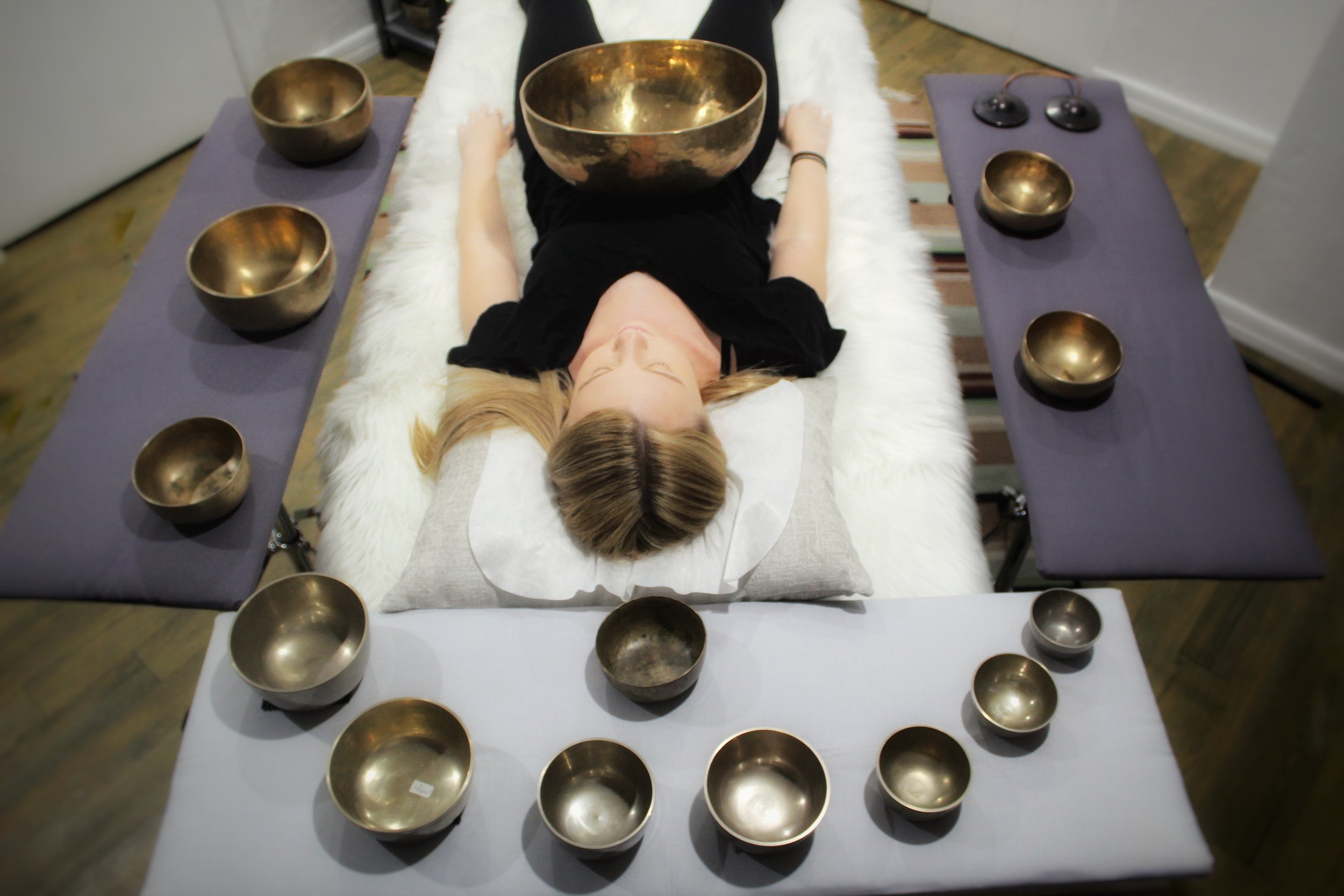DIY Sound Therapy Side Tables
One of the questions I regularly receive from sound practitioners on social media is, “What are those side tables you use for your singing bowls?” Guess what? I made them! Well, I made the top bit anyway. The base is a Ludwig Orchestra Bell Stand available from just about any music shop. The top is a custom plywood and fabric creation based on percussion trap tables commonly found in major symphony orchestras. We use them for smaller instruments and mallets. These “tray tables” are generally placed on restaurant style “x-stands” or extra bells stands, like here.
Restaurant supply x-stand for serving trays
Tray Table
Cymbal table
Percussion “accessories” table (tambourine, triangle, castanets, sleigh bells pictured here)
Trap tables in context with Arizona Musicfest Festival Orchestra
When I first set-up my private practice, I knew I needed a great table for my singing bowls. I didn’t feel completely lost, having built my cymbals tables for the orchestra. Using a similar style table would bring a desirable level of portability and maneuverability that I hadn’t seen from other sound therapy set-ups. Initially, I started out with a plastic pre-fabricated bookshelf from Home Depot. I liked the stone grey color but they were heavy and the singing bowls made too much noise on them.
My first attempt at a smaller table. Zen with Ben (Tilt Gallery, Scottsdale), Fall 2019. Note: no bell stands here. The x-stands I had on hand were aesthetically clumsy.
I finally decided to build my own from scratch. My percussion tables are 2’x2.5’ which was more space than I needed for my singing bowls. Though, hilariously, I had forgotten that while I was setting up my Tempe office I was using one of the OG tables as a temporary surface for my fountain and session mallets.
I cut my plywood to 1’x3’ for the sound therapy tables. Add a layer of batting on top, then cover with fabric. Stretch somewhat tightly and finish off with furniture tacks underneath to hold the fabric in place.
Initially, I wanted to bring in a fabric with an Asian vibe. While I love the pattern, it ended up feeling really busy and unbalanced in my therapy space. I recommend simple, muted colors in natural Earth tones. The final result are 3 tables that have a low profile in my office, allow me to customize each session without feeling limited by the massage table, and structurally solid to support multiple singing bowls, bells, tingsha, and anything that comes up in a sound therapy session.
Table Pro’s:
Exact size specifications for my bowls.
Low profile while set-up. Collapsible for storage and transporting.
Bells stands are sturdy.
No instrument or mallet contact surface noise.
Able to change with wear over time or if I get bored with the fabric.
Drape blankets over them and they double as a sound panels while recording.
Table Con’s:
You gotta do them yourself.
Bell stands are slightly pricey if you aren’t already double-dipping from your orchestral equipment inventory.
Bell stand dimensions don’t perfectly match the table dimensions, potentially leaving some edges out that can snag you or your clients.
Stands are also on the tall side. If you have a shorter stature, they may not be to your advantage.
Stand platform may run the risk of an unbalanced see-saw (teeter-totter) that can potentially catapult your singing bowls across the room.











